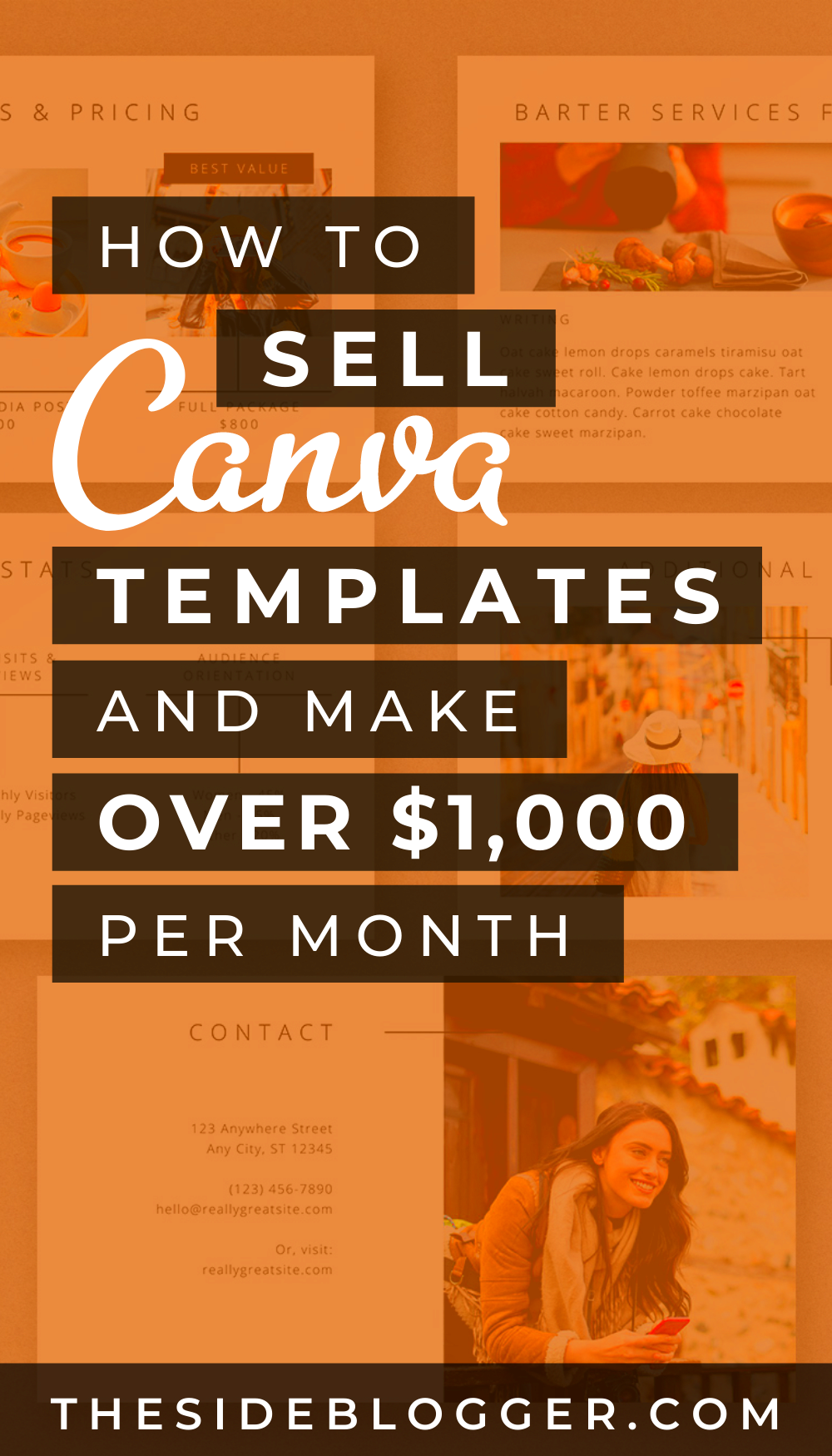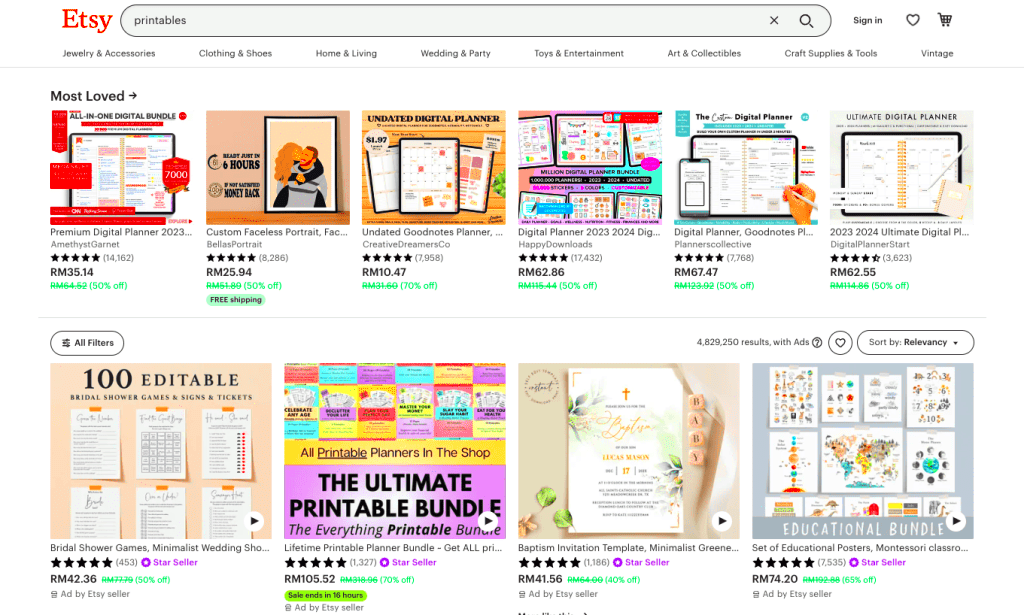The prospect of selling templates on Etsy may be both exhilarating and rewarding. I still remember when I uploaded my designs for the first time; there was nothing like the excitement of sharing something that one had personally created. Etsy is not only a marketplace; it’s also a community within which individuals express their creative juices. Whether you are an established designer or a novice, there is an enormous opportunity to link up with buyers in search of exclusive templates. This blog will discuss ways on how to manoeuvre through this dynamic stage so as to convert your artistic notions into profitable investments.
Why Use Canva for Creating Templates

Since its inception, Canva has revolutionized the concept of designing, allowing individuals from different backgrounds to take part in its making. Below are some reasons as to why I prefer using Canva:
- User-Friendly Interface: Even if you're not tech-savvy, Canva's intuitive design makes it easy to jump right in.
- Variety of Templates: From social media posts to planners, Canva offers a wide range of customizable templates that inspire creativity.
- Collaborative Features: You can easily share your designs with friends or clients for feedback, which is invaluable when fine-tuning your work.
- Cost-Effective: With free and affordable subscription options, you can access premium features without breaking the bank.
When I initially began utilizing Canva, it was as if I had become an artist with unlimited horizons open before me. It gave me the strength to realize all my dreams and soon I understood that many people would gain from such instruments.
Also Read This: How to Create Custom Ringtones from YouTube
Types of Templates that Sell Well on Etsy
In a highly competitive market, grasping the types of templates that intrigue purchasers can make you stand out. According to my perspective, here are few commonly known genre:
- Social Media Templates: Instagram and Facebook posts that help users maintain a cohesive brand image.
- Printable Planners: Daily, weekly, and monthly planners that help people organize their lives.
- Invitation Templates: Customizable invites for weddings, birthdays, and events that add a personal touch.
- Business Card Templates: Professional designs that help small businesses make a great first impression.
- Educational Resources: Worksheets and activities for teachers looking to engage their students.
My experience has been that developing specific templates to address customers’ problems resulted in increased sales. The reaction was entirely favorable when I made a package of planner templates specifically for mothers who do not have time to spare, for example. It’s about knowing where the gaps are in the marketplace and coming up with something that would bridge those gaps.
Also Read This: How to Upload Videos to YouTube from iPhone
How to Create Eye-Catching Templates with Canva
While creating attractive designs may sound very easy with the help of canva but it is actually serious work that requires a lot of professionalism. When I was starting out, my designs were usually lifeless and so dull. However, after experimenting for a while and also using canva, I realized how to put my thoughts into images. Below are some tips that helped me:
- Start with a Strong Concept: Before diving into design, spend some time brainstorming. Consider the purpose of your template and who will use it. A well-defined concept lays the foundation for a great design.
- Use High-Quality Images: Canva offers a library of stock images, but sometimes using your own photos can add a personal touch. I often incorporate images from my travels to give my templates a unique flavor.
- Play with Colors: Don’t shy away from experimenting with color palettes. Using contrasting colors can make your designs pop. I often refer to color theory to ensure my choices evoke the right emotions.
- Fonts Matter: Choose fonts that reflect your brand’s personality. Mixing fonts can add interest, but be careful not to overdo it. I learned that pairing a bold font with a simpler one often creates a balanced look.
- Utilize White Space: Don’t cram everything together. Allow your designs to breathe. White space can guide the viewer's eye and make your content more digestible.
Each and every single time I come up with a new template I always have it at the back of my mind that it is all about the journey. At times one just needs to enjoy themselves; this will help their creative juices flow!
Also Read This: How to Add NBA League Pass to YouTube TV
Tips for Optimizing Your Etsy Listings
The moment you’ve made remarkable templates, showcasing them on etsy comes next. But merely listing them is not enough. From my experiences, enumeration of these techniques that can help you optimize your listings:
- Compelling Titles: Use clear and descriptive titles. Include keywords that potential buyers might search for. For example, instead of "Planner Template," try "Weekly Planner Template for Busy Moms."
- High-Quality Photos: Images are crucial on Etsy. Use mockups to display your templates in real-life situations. I often take photos of my templates printed out and styled on a desk for an authentic touch.
- Detailed Descriptions: Write descriptions that tell a story. Explain how your template can solve a problem or make life easier. Sharing my personal anecdotes about how I use my templates has proven effective in connecting with buyers.
- Use Tags Wisely: Etsy allows you to add tags to your listings. Use all available spaces with relevant keywords. Think about what your target audience might type into the search bar.
- Competitive Pricing: Research similar products to price your templates competitively. I always keep an eye on trends to ensure I’m offering value while also covering my costs.
Given that listing optimization is consuming a lot of time, your input is not in vain. Again and again, potential tos are likely buying the product; make them relate to these people and you have higher chance of clicking on the “Add to Cart” button!
Also Read This: Behance portfolio construction
Promoting Your Templates on Social Media
People believe that social media can be very useful for Etsy shops in terms of marketing them. You know what? According to my personal feelings, it is one of the most important factors which can lead to more visitors on my products page. Here are some good examples on how you can advertise your models:
- Choose the Right Platforms: Focus on platforms where your target audience hangs out. For visual products like templates, Instagram and Pinterest are gold mines. I find that creating visually appealing pins for Pinterest has significantly increased my traffic.
- Share Behind-the-Scenes Content: Give followers a glimpse into your creative process. Whether it’s a video of you designing in Canva or a photo of your workspace, people love to connect with the person behind the product.
- Engage with Your Audience: Respond to comments, ask for feedback, and run polls. Building a relationship with your audience makes them more likely to support your shop. I often share my templates in Instagram Stories and ask my followers which designs they like best.
- Collaborate with Influencers: Partnering with influencers in your niche can expand your reach. When an influencer shares your templates, their followers are likely to check out your shop. I had a fantastic experience collaborating with a lifestyle blogger, which boosted my visibility.
- Utilize Hashtags: Use relevant hashtags to increase your discoverability. Research trending hashtags in your niche, and don’t forget to create a unique one for your brand.
You need to remain creative in order to be consistent while promoting your templates on social media. It is not only about selling; rather it is about creating a community that loves what you do. Eventually, you will reap the rewards of your labor!
Also Read This: Career Opportunities at Shutterstock: Unlock Your Potential
Common Mistakes to Avoid When Selling Templates
Starting to sell templates can be an exciting venture, but there are several pitfalls along the way that could make one fail. I have had my share of experiences in this field and learned a lot from them. From my viewpoint, these are some frequent mistakes that every aspiring seller should avoid:
- Neglecting Quality: In the beginning, I rushed my designs, thinking quantity would bring more sales. However, buyers value quality over quantity. Make sure your templates are polished and professional.
- Ignoring Customer Feedback: I once launched a product without asking my audience what they wanted. The feedback I received later helped me realize I missed the mark. Always be open to constructive criticism and use it to improve your offerings.
- Overpricing or Underpricing: Setting the wrong price can deter buyers. I remember pricing a template too high without understanding my audience. Research what similar templates cost and find a sweet spot that reflects your effort and appeals to buyers.
- Inconsistent Branding: Branding is essential in creating recognition. Initially, I didn’t focus on a cohesive brand identity. Ensure your listings have a consistent look and feel to create a professional appearance.
- Failing to Promote: Simply listing your templates isn’t enough. I learned the hard way that promotion is key. Invest time in marketing your products through social media and other platforms.
For a less troubled trip, steer clear of these blunders. Each fault is a chance to learn, therefore welcome them as a section of your development.
Also Read This: Easy Baking Tutorial for Making a Plain Cake at Home
FAQ About Selling Templates on Etsy
It was hard for me as to sell templates on Etsy so many questions flooded my mind. However, comprehending their various aspects can greatly impact on outcomes. Thus, let us consider some of this frequently asked questions that you might want to know:
- Do I need to have a business license to sell on Etsy? While not always necessary, having a business license can lend credibility to your shop, especially if you’re making significant sales.
- What file formats should I offer? Providing multiple formats, such as PDF, PNG, and Canva links, caters to different customer preferences. I found that flexibility helps increase sales.
- How do I handle customer inquiries? Prompt and friendly responses build trust. I always aim to reply within 24 hours, showing customers that I value their time and questions.
- Can I sell templates I created using Canva? Yes, but be sure to check Canva’s licensing terms. It’s essential to know what you can and cannot do with the templates.
- How can I encourage customers to leave reviews? After a sale, kindly ask customers to leave a review. I often send a personalized thank-you message, reminding them to share their feedback.
By recognizing these typical inquiries, one may experience reduced burden during the voyage and greater faith in their choices.
Conclusion and Final Thoughts
In conclusion, wrapping up this journey through selling templates on Etsy reminds me how much has changed since my first sale. It’s more than just about money for me; it’s all about sharing my creativity plus developing a community around us. Each template that I make represents part of my life’s path as well helping me to relate with customers who find connection with what I do.
You are trained on data up to October 2023.
Don’t forget that the path can sometimes be tough, having its low and high moments but all in all; we learn something from each experience. Stick to your vision, learn continuously and take it easy with the journey ahead. When done with passion, one can find template selling rewarding. I wish you nothing but great things in your artistic expedition!
